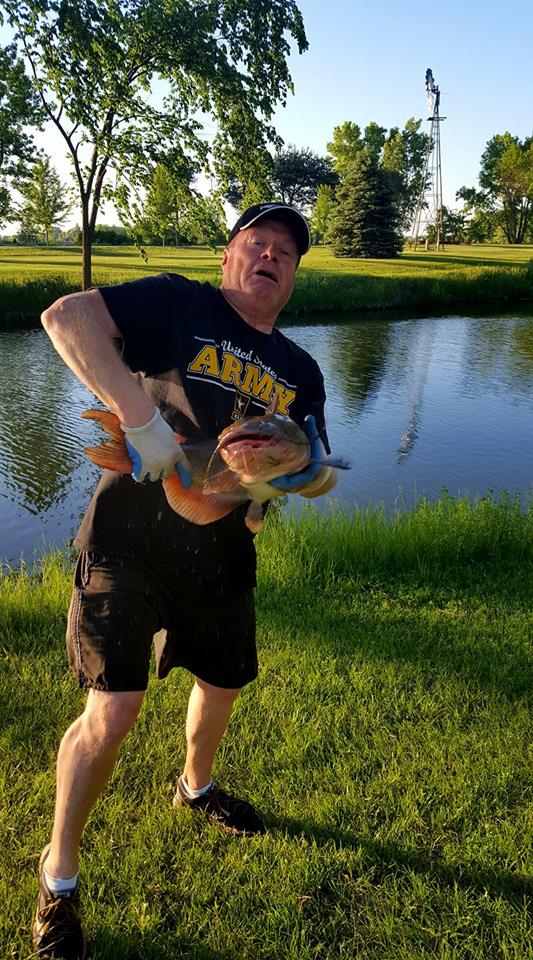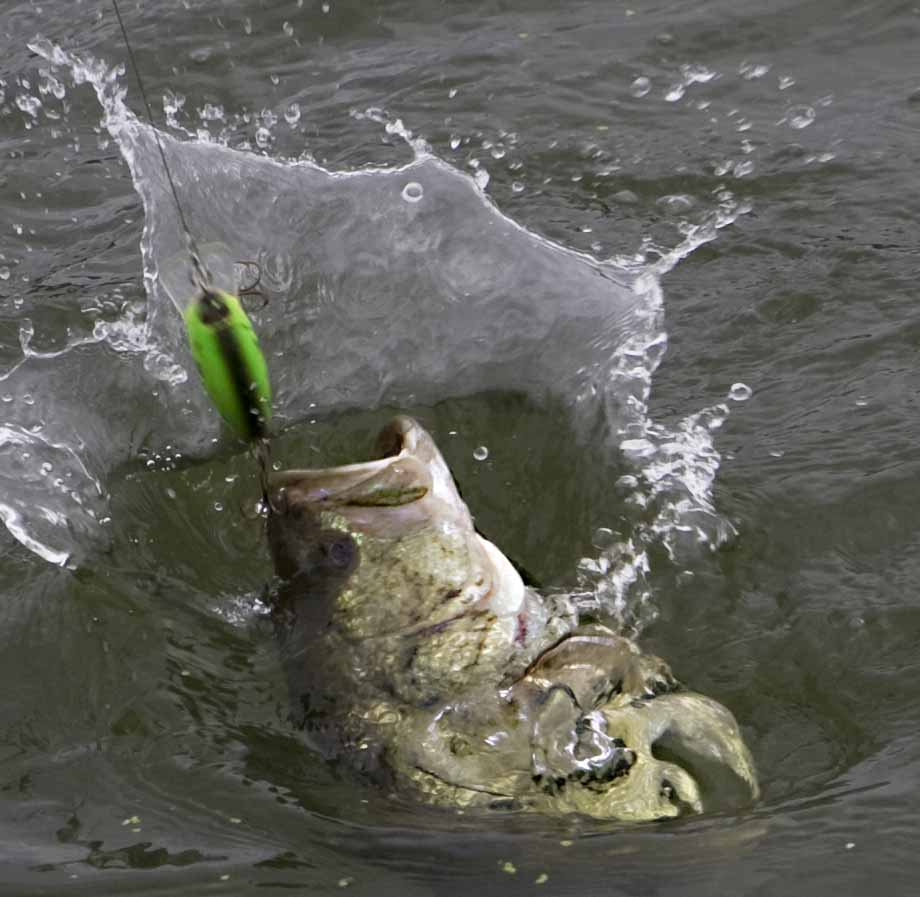All of us who love to fish have a story or two about the one that got away, don’t we?
Invariably, the tale involves hooking the fish of a lifetime and losing it to unforeseen circumstances or mistakes.
Trust me, I have made my share of mistakes when it comes to large, prized game fish.

Without question, these stories, however embellished, can be devastating to those who have a passion for wetting lines.
For as many wild and crazy occurrences that aren’t preventable when you lose a big fish, there are many things you can control that help to ensure it doesn’t happen, particularly when taking a relative newcomer out fishing with our Take ‘Em Fishing Challenge!

Here are some pointers to greatly assist you with successfully landing that bona fide behemoth:
The Equipment
1. Sharpen your hooks
Come on, who really sharpens their fishing hooks? Anglers that are successful with landing big fish sharpen their hooks, that’s who! Dull hooks are one of the primary reasons as to why anglers lose fish, especially if they’re not hooked in the lip. You have two options to prevent losing fish from dull hooks, either invest in a hook sharpener (they’re very cheap and compact) or buy new hooks more often. For catch-and-release purposes with big fish, single circle or barbless hooks are the way to go. They radically decrease the rate of deep hooking and this is well documented in studies.
- Use new line.
Have you replaced your old fishing line? With this modern era of “high-performance” fishing, a high number of anglers seem to be making the switch from older monofilament lines to the newer braided ones. As its name implies, braided line is a kind of aggregate of smaller lines braided together, much like a rope is. While it tends to fray and make knot-tying harder, it generally outlasts monofilaments and won’t break as easily when fighting a line-snapping giant.
- Swivels and metal leaders.
Are certain pieces of hardware required for catching large fish? Using suitable swivels and metal leaders can be the difference between a successful trip targeting big fish and one that ends up in total disappointment. Yes, swivels and metal leaders are that important, particularly for bigger specimens in the pike and catfish families, but it depends on the scenario. Swivels and metal leaders are often two of the most overlooked pieces of equipment that anglers own.
- Try a bit more flexible, longer, one-piece rod.
What is the right rod to use for going after Master angler-sized fish? Fishing rods that are stiff often put more pressure than necessary on points of tension between you and the fish you’re fighting. Using a more flexible rod will allow the line some more “give,” and prevent it from snapping when a pressure overload is applied. Also, longer, one-piece rods may be more difficult to transport, however, they provide greater leverage and don’t come apart when landing large fish.
- Adjust your drag settings.
Do I really need to mess with the drag settings on my reel? Yes! Surprisingly, umpteen anglers completely ignore the drag settings on their fishing reels, and it is a catastrophe waiting to happen! Consequently, this equals lots of lost fish on the water. A light to moderate drag setting (that will not apply a force greater than the line capacity) should be employed. If the fish is making hard runs and leaping out of the water, adjust the drag to a loose setting. As the fish starts to lose energy, adjust the drag to a tighter setting. By using the drag to your advantage, it dramatically increases the chances of catching that so called “hawg,” “toad” or “megalodon of a lifetime.”
- Tie good, strong knots.
Just how significant are well-tied knots! Quite significant. I would say just about every angler, at one point or another, has tied a knot too hastily and ended up losing a big fish because of it. At a minimum, take some time to practice the two most popular line-to-hook knots: the Palomar Knot and the Improved Clinch Knot. With time, you’ll be able to tie them quickly and confidently when you’re on the water.
The Fight
- Rule for setting the hook.
Fishzilla has taken your bait or snatched your lure presentation, now what?! Remind yourself that an excellent rule of thumb with setting a hook on a pez muy grande (very big fish in Spanish) is to do it twice, like what is referred to as a “double tap.” When the fish initially takes your lure or bait and you feel the tension on the line, tug sharply and repeat.
- Rod tip up, maintain pressure and change direction.
Are tactics during the actual battle to land the fish that important? Once that pole bender is hooked, maintain constant pressure on it by keeping the tip of your rod vertical. Change the direction of the pressure throughout the battle, forcing the fish to move in different directions. As the fish moves, try to bend the rod away from the direction in which the fish is swimming and slightly lower the rod to tighten up the angle. The fish will have to expend energy countering your moves.
- Keep your line tight, no slack.
Is your line taut? It is crucial that you always maintain tension firmly on the line after setting the hook on that whopper of a fish! If there is slack, the fish will have a better chance of throwing the hook, and you will be left with a huge amount of disappointment. (Although you might have a good story, but it’s not worth it.) Sustain pressure on the line by keeping the tip up and reeling in with a smooth, consistent motion.
- Lift up, reel down, repeat.
What is the proper method or motion for getting that monster to the boat or shoreline? Keep in mind that when hauling in a super lunker, you can’t just reel, reel, reel and hope to get that sucker in fast. Instead, you need to lift the tip of the rod with a smooth and firm motion, pulling the fish closer to you. When you drop the rod tip down, this is the time to reel in line. Go slow, be patient, and you’ll catch more fish and have plenty of Master Angler Awards to prove it!
- Let it run, but not near structure.
Can I let the big fish run or not? If you have a large fish that decides to make a run for it, the worst thing you can do is try to hold it in place. Trust me, I know this from experience. By fighting its runs, all you are going to do is increase the chances that your fishing line will break, and your payoff will swim away. Instead, set the drag so the fish can take out line while still tiring itself. This will wear down the fish; eventually their runs will get shorter, less aggressive, and less frequent. There is one exception though. If a fish is making a run for submerged or partially submerged structure or cover such as logs, rocks, docks, boat storage sheds, flooded trees, etc., steer it away. When fishing line is wrapped around that structure or cover in the water, a lot of strain is put on it and snapping normally ensues. If your trophy fish is heading for a snag, do whatever you can to keep it out of there.
- Follow it.
Do I need to follow that fish? Following the large, powerful fish you have hooked on foot along the bank or with a boat on the water is vital to minimize the distance between you and the fish. Being close to it gives you better control and helps maximize the pressure you put on it.

The Landing
- Use a partner.
Should I go fishing with a partner? Absolutely! Use that fishing partner for assistance with the landing of that enormous fish specimen. Your partner can direct you to a shallow water landing area or help you in a boat. Having a partner will also let you focus on effectively playing the big fish, reducing the risk that you will lose your potential, memorable catch when you release pressure to capture it with a net. By having a partner observing and assisting, the tendency to make mistakes and “winch,” “horse” or “beach” the fish should be reduced, too.

Your partner can serve as a witness, photographer or even videographer of your catch. Plus, fishing with a partner is safer and more fun!

- Finishing, rubber netting and gloving.
What do I need to remember when finishing the catch? If you see it, it can see you. Prepare for a last-ditch escape maneuver by that whopper. If it dives under the boat, jab your rod tip in the water. Do not grab the line. Stay focused and keep that big fish off-balance. Use a long-handled, larger-meshed, rubber or rubber coated landing net in order to secure the fish. Be certain to lead it into the net head-first. Keep in mind that rubber meshed landing nets should be utilized because other nets that have knots or string mesh can be quite harmful in damaging the fish’s mucus coating or protective slime and are more cumbersome and prone to tangling, not allowing for swift catch-and-release. Wet rubberized gloves also work well to handle big fish and do not cause undo harm to them.

- Quick pic, video and release.
I have landed it, now what? Okay, if you plan to release the aquatic behemoth you’ve landed (and you should), do so as soon as possible. You may have just fought the fish for 15 minutes or more; that fish is now exhausted and extremely stressed. It cannot afford to stay out of the water for very long, so get a quick photo or video, perhaps a fast measurement, and then release the fish back to its home. You’ll help preserve a healthy fish population and hopefully give another angler the chance to enjoy a big catch.
Video Player
Bauer On Big Fish
Ask Daryl Bauer, biologist, expert angler and fisheries outreach program manager at the Nebraska Game and Parks Commission about big fish and here’s what you get: “Big fish matter. Big fish aren’t hard to catch because their smart, it’s that they are so rare. There are only so many big fish that occupy a given water body or waterway.
He further emphasizes: “Big fish are always the least abundant in fish populations. When they go home with somebody, they are less abundant. Those big fish are likely to have the best genetics in the population so you want them returned to the water to live, breed and spawn. Properly release those big fish!”


Bauer adds: “Look, I tell anglers all the time that you can’t catch big fish from waters where they don’t exist. How do you know if there is potential for big fish? In this information age, anglers have access to more information than ever before. The Nebraska Game and Parks Commission produces an annual Fishing Forecast based on sampling done by its biologists.
Other avid anglers may be a better source of information on large fish in a body of water because they target big fish. Compilations of big fish caught by anglers in contests or angler recognition programs are great indicators of waters that have “big-fish potential.”
When it all comes together, a massive fish sucks in your lure or bait. What you do next is the difference between ‘ultimate glory’ or just another ‘yeah, almost’ fish story.
Good fishing for big fish!

Unblock comments




